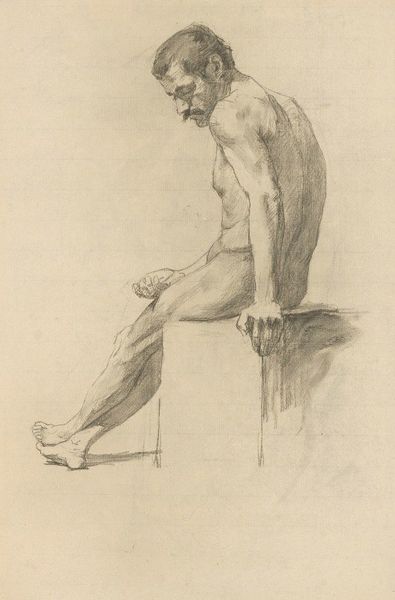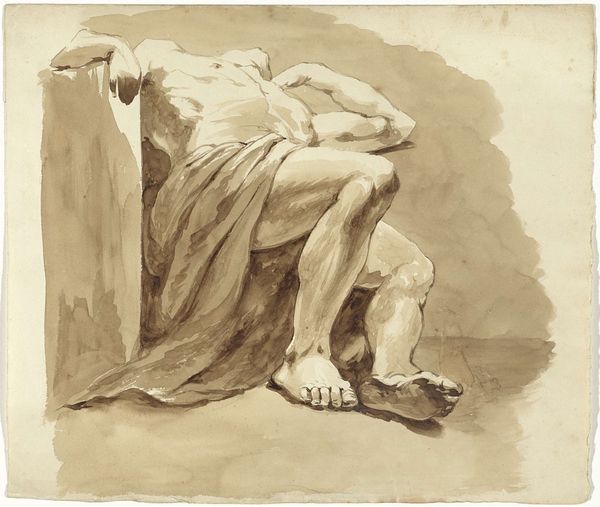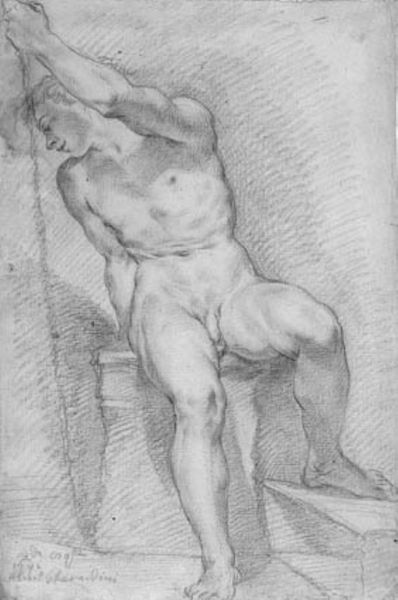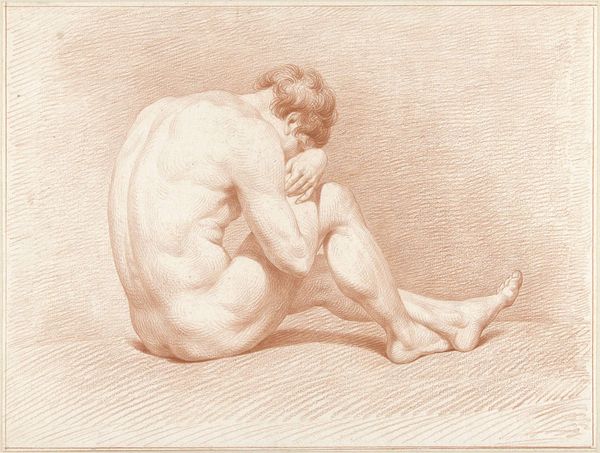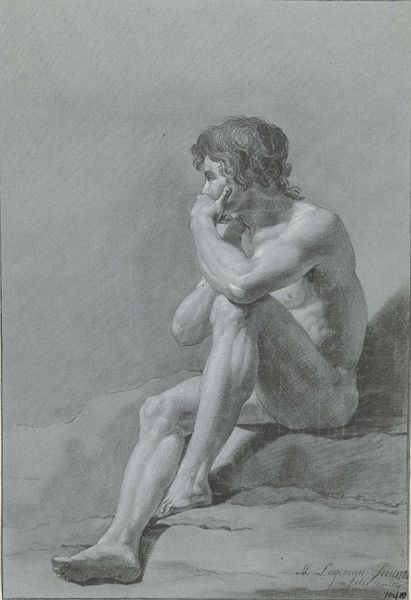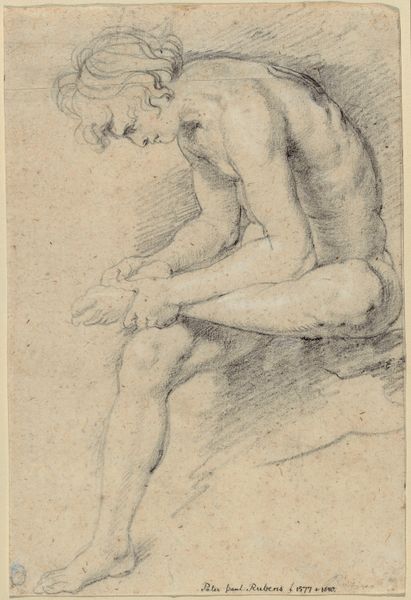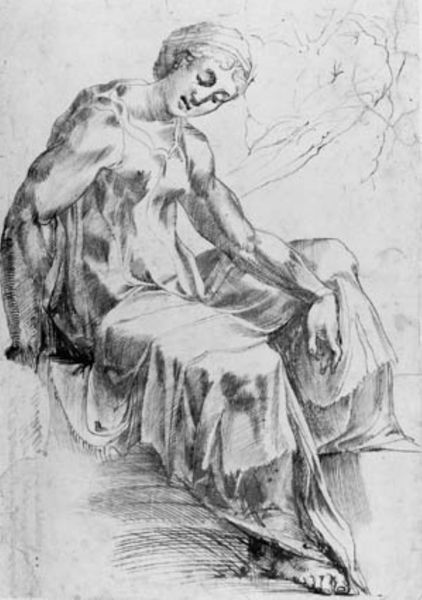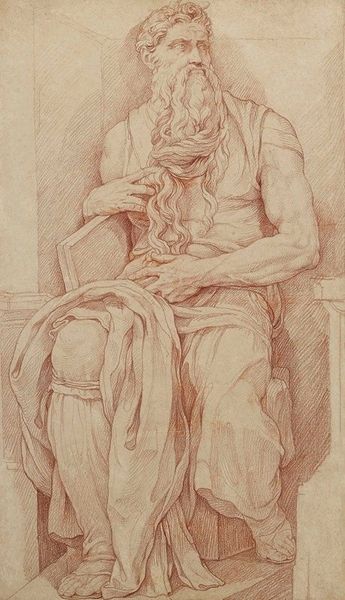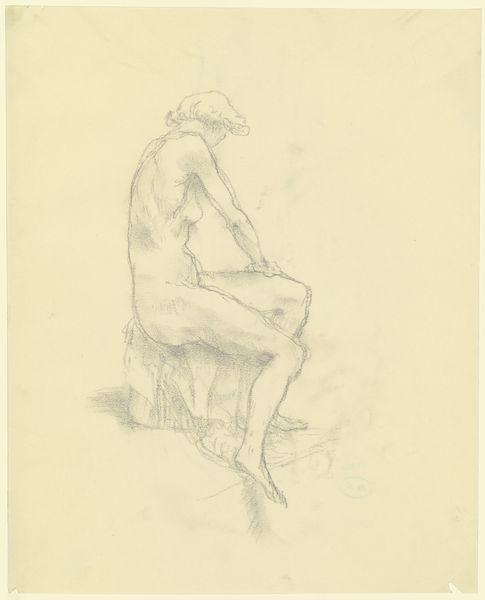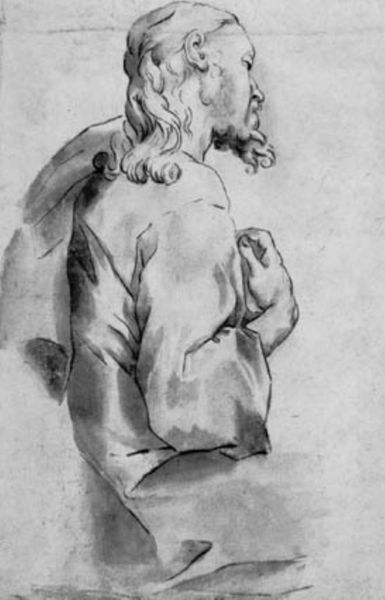
drawing, pencil, charcoal
#
portrait
#
drawing
#
baroque
#
pencil sketch
#
charcoal drawing
#
figuration
#
pencil drawing
#
pencil
#
portrait drawing
#
charcoal
#
nude
Dimensions: 402 mm (height) x 358 mm (width) (bladmaal)
Editor: So, here we have "Sitting Nude Man in Profile to the Left," a drawing made around 1691 by Alessandro Gherardini, using pencil and charcoal. I'm really struck by the vulnerability in the subject’s posture and facial expression. What's your take on this work? Curator: It’s a potent piece, isn’t it? The male nude in art history has often been used to convey ideas of heroism or idealized beauty. However, Gherardini presents us with a figure seemingly lost in thought, almost melancholic. What do you think this subversion tells us about Baroque societal norms or the artist's possible intentions? Editor: I hadn't really considered that contrast. Maybe he was commenting on the expectations of masculinity? Curator: Precisely. It challenges the conventional narrative. We have to also acknowledge that the Baroque period, while filled with grandeur, also wrestled with questions of human frailty. How might this drawing speak to the experience of marginalized bodies during the time? Consider those excluded from typical depictions of beauty and power. Editor: That makes me see it differently. The man’s body isn't idealized; it looks... real. Could this realism itself be a form of political commentary? Curator: Absolutely. Consider who got to be represented, and how. Realism, particularly depicting bodies considered outside the norm, was and is often a subversive act. Editor: I never thought about the sitter's posture representing a political view, that’s eye-opening. Curator: Thinking about the context broadens the interpretation.
Comments
No comments
Be the first to comment and join the conversation on the ultimate creative platform.
